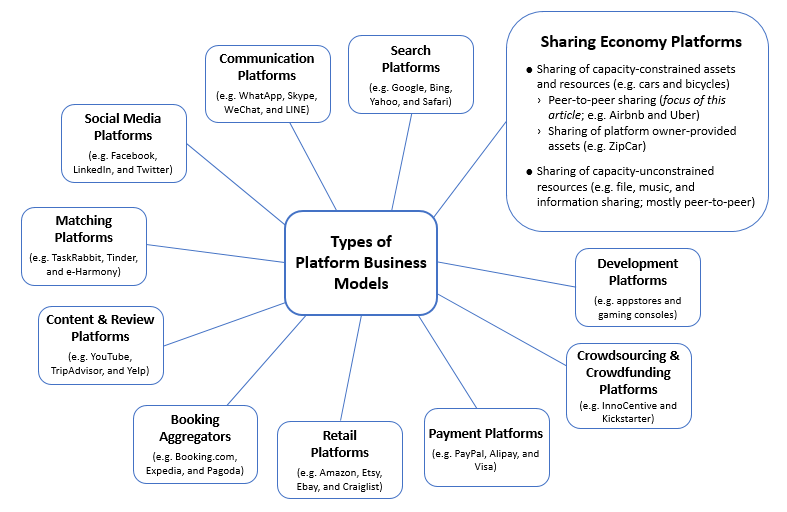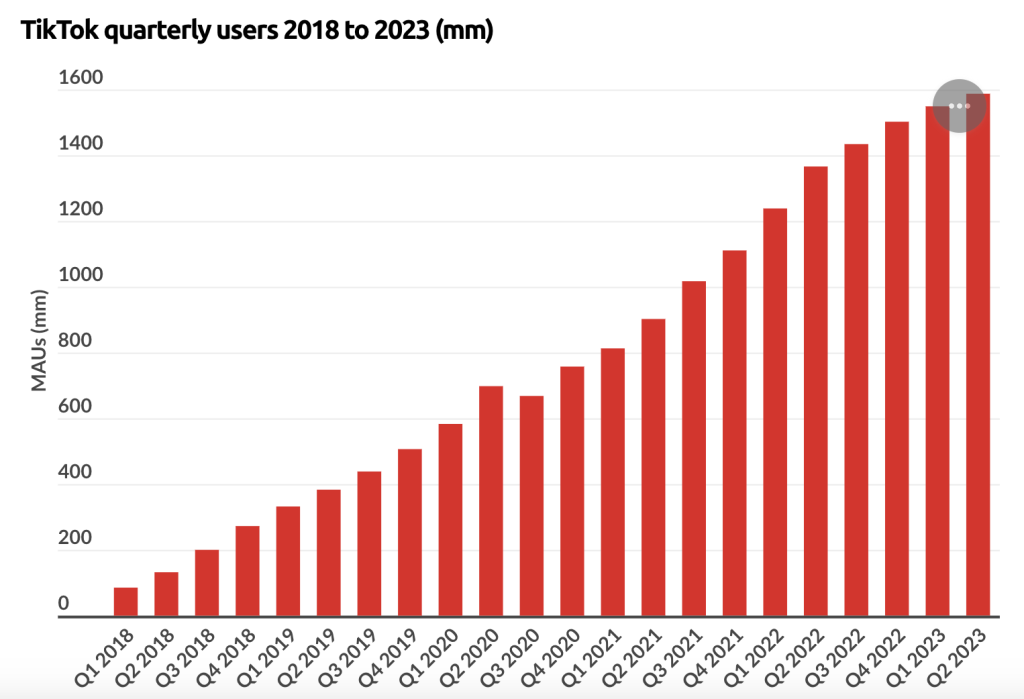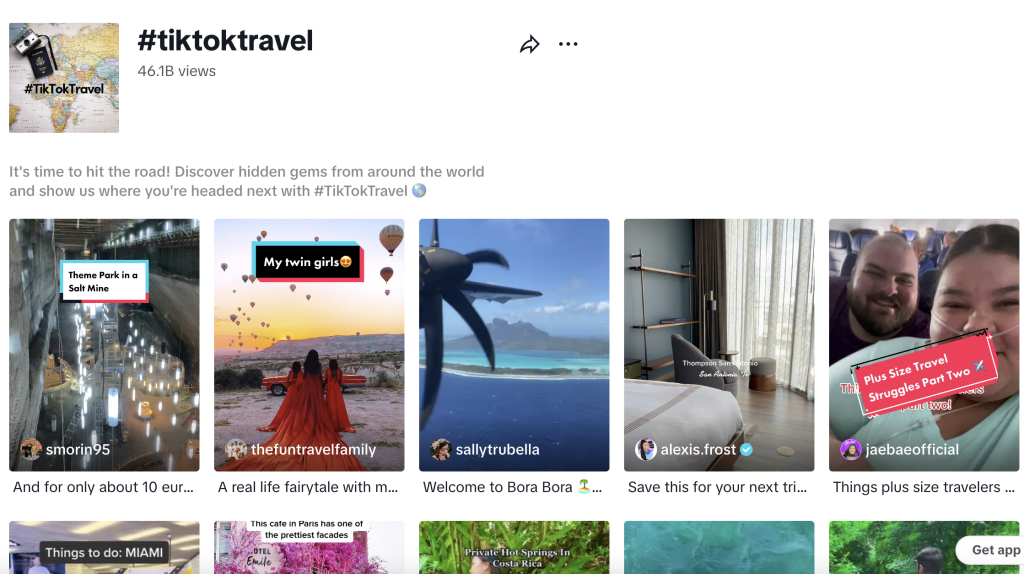Introduction

The sharing economy has gone through a number of processes since its inception. Initially, its primary form was offline equipment sharing, such as shared bikes, cars, and office space. However, with the advancement of digital technology and the rise of social media, the focus of the sharing economy has gradually shifted from physical resources to digital platforms and content. Especially with the rise of short video platforms, such as TikTok, peer-to-peer and end-to-end content sharing has become the new form of the modern sharing economy. (Sutherland & Jarrahi, 2018) This User Generated Content (UGC)–based sharing model provides a much broader and deeper audience touchpoint and presents unprecedented opportunities for brands and businesses to gain significant reach and success quickly. However, how to find a balance between pursuing business goals and maintaining the authenticity of social media dynamics and the trust of users has become a topic worthy of in-depth study. TikTok, for example, successfully allows brands to interact with users on an equal and authentic platform, and this interaction not only enhances brand perception among consumers but also creates real value for them. However, at the same time, brands must avoid over-commercialisation when creating and distributing content to maintain their content’s authenticity and a strong connection with their users. Therefore, combining user-generated content with commercial objectives is a complex but feasible process that can lead to a win-win situation for all parties(IQBAL, 2023).
Statement of the Thesis
With globalisation and rapid technological advancement, we have entered an era of digital consumption. Consumers’ purchasing decisions, brand loyalty, and how they interact with brands have changed dramatically in this era. Social media platforms like TikTok have become key venues for interaction between brands and their target audiences. Against this backdrop, simply bringing a product to market without connecting with consumers will not work. Businesses and brands must reassess and combine their business objectives with a strong social media strategy. This combination is desirable and essential, especially on platforms like TikTok, which provides a unique, highly interactive environment that allows brands to engage with consumers in a more direct and fun way. This interactivity increases brand awareness and deepens consumer trust and loyalty. Only when companies and brands truly understand and capitalise on the potential of social media, especially on platforms like TikTok, will they gain a foothold in today’s competitive sharing economy.?This integration will increase brand visibility and engagement and lead to long-term, meaningful success and influence(Hern, 2022).
Supporting evidence

There are a number of factors behind TikTok’s success, but its high level of user engagement is the most obvious competitive advantage. According to statistics, the platform has more than 1.5 billion users, and the main reason behind this engagement is TikTok’s in-depth understanding of its user base. Generation Z, who have grown up in an age of digital technology, has a significantly different way of acquiring and consuming information than the previous generation(IQBAL, 2023). This generation favours short videos and moving images over long articles or traditional advertisements(Laurell & Sandström, 2018). They like to access information in a short period and have high expectations for authenticity and originality in content.TikTok fulfils these needs. It provides a platform where users can upload and share short videos, which are usually original, creative and able to convey a strong message or emotion in a man. At the same time, TikTok’s algorithms ensure that users see content that matches their interests and preferences, further increasing user engagement(Hern, 2022).
Additionally, Gen Z prefers brands that connect with them authentically over traditional advertising. TikTok provides a platform where brands can build these authentic, no-frills interactions with their users, which builds deeper brand loyalty. Finally, TikTok’s form of content – short videos – appeals significantly to Generation Z because it aligns with this generation’s information consumption habits. The fact that short videos can convey information quickly and in a free and easy format has made TikTok the platform of choice for Gen Z to access and share information.TikTok’s high user engagement is not just a numerical success but also the result of its deep understanding and fulfilment of Gen Z’s needs. This has made the platform stand out in the highly competitive social media market and become the preferred choice of Gen Z(Fuaddah et al.).

More and more brands have realised the potential of TikTok and started to use the platform for marketing effectively. Airbnb, for example, has successfully attracted a large young audience on TikTok with its “#tiktoktravel” campaign by showcasing real user experiences (Tiktok, 2023). This shows that brands can achieve significant commercial success on TikTok through authentic, interesting and targeted content, and TikTok’s algorithmic strengths cannot be ignored. Unlike other social media platforms, TikTok’s algorithm focuses more on actual user engagement than simply the number of followers. This levels the playing field for businesses of all sizes, making the relevance and quality of the content key to reaching an audience rather than the brand’s popularity or financial strength. This algorithmic strategy allows quality content to get the attention it deserves, encouraging more brands and creators to engage and produce valuable content (Hern, 2022).
In the context of the sharing economy, TikTok’s rapidly changing popularity presents opportunities and challenges for many of the brands and individuals involved. Community-based engagement, resource sharing, and direct user interaction are at the heart of the sharing economy. This is exactly what TikTok offers – a platform that allows users to share content, build communities and interact directly with brands (Fuaddah et al.).
Some may question how transient trends can build lasting value in the sharing economy. However, the key here is not in following fads but in capturing those moments of truth that align with the essence of a brand or service. Successful brands in the sharing economy deliver authentic, credible and valuable experiences. For example, a short TikTok video about a lodging experience in a particular place may quickly become popular because it captures an authentic, unpolished user experience. This authenticity aligns with core values in the sharing economy, as consumers tend to prioritise authentic user feedback when choosing shared services (Fuaddah et al.).
In addition, while quantifying the success of sharing economy activities on TikTok has its difficulties, measuring the return on these activities is becoming easier as TikTok continues to evolve and refine its business tools. TikTok’s integration with e-commerce provides a new sales and promotional channel for the sharing economy, allowing brands and individuals to see firsthand how their content translates into tangible revenue. So, while trends on TikTok may change, the authenticity, community engagement and direct user interaction that it brings to the sharing economy offers a huge opportunity for brands and individuals if they can truly understand and meet the needs of their audience.
Conclusion
The sharing economy is reshaping modern business models, driving efficient use of resources, authentic human interaction and transparent transaction processes. With the rapid advances in technology and social media, companies must take a deeper look and adjust their business strategies. No longer are old-fashioned adverts based on highly manufactured marketing strategies, such as TV and radio, resonating with the modern consumer. Rather, the brands and messages are authentic and transparent and create a real connection with consumers who are moving to the lead in today’s marketplace. Leveraging the power of TikTok and other social media platforms to make authentic, meaningful connections with consumers is not only an opportunity. It is a necessity. Such a strategy enhances brand awareness and trust and builds and maintains consumer loyalty. In this digital age of opportunity and fierce competition, only those businesses willing to move with the times, innovate and truly care about their consumers will be able to sustain their success and stand out in the sharing economy.
Reference List
Fuaddah, Z., Nurhaeni, I. D. A., & Rahmanto, A. (2022). Digital Marketing Strategy for Campaigning @kedasbeutypusat Social Media Accounts on TikTok Application.
Hern, A. (2022). How TikTok’s algorithm made it a success: ‘it pushes the boundaries’. Retrieved Oct 7 from https://www.theguardian.com/technology/2022/oct/23/tiktok-rise-algorithm-popularity
IQBAL, M. (2023). TikTok Revenue and Usage Statistics. Retrieved Oct 7 from https://www.businessofapps.com/data/tik-tok-statistics/
Laurell, C., & Sandström, C. (2018). Comparing coverage of disruptive change in social and traditional media: Evidence from the sharing economy. Technological Forecasting and Social Change, 129, 339-344. https://doi.org/https://doi.org/10.1016/j.techfore.2017.09.038
Sutherland, W., & Jarrahi, M. H. (2018). The sharing economy and digital platforms: A review and research agenda. International Journal of Information Management, 43, 328-341. https://doi.org/https://doi.org/10.1016/j.ijinfomgt.2018.07.004
Tiktok. (2023). #tiktoktravel. Retrieved Oct 7 from https://www.tiktok.com/tag/tiktoktravel?lang=en
Wirtz, J., So, K. K. F., Mody, M., Liu, S., & Chun, H. (2019). Platforms in the Peer-to-Peer Sharing Economy. Journal of Service Management, 30, 452-483. https://doi.org/10.1108/JOSM-11-2018-0369

